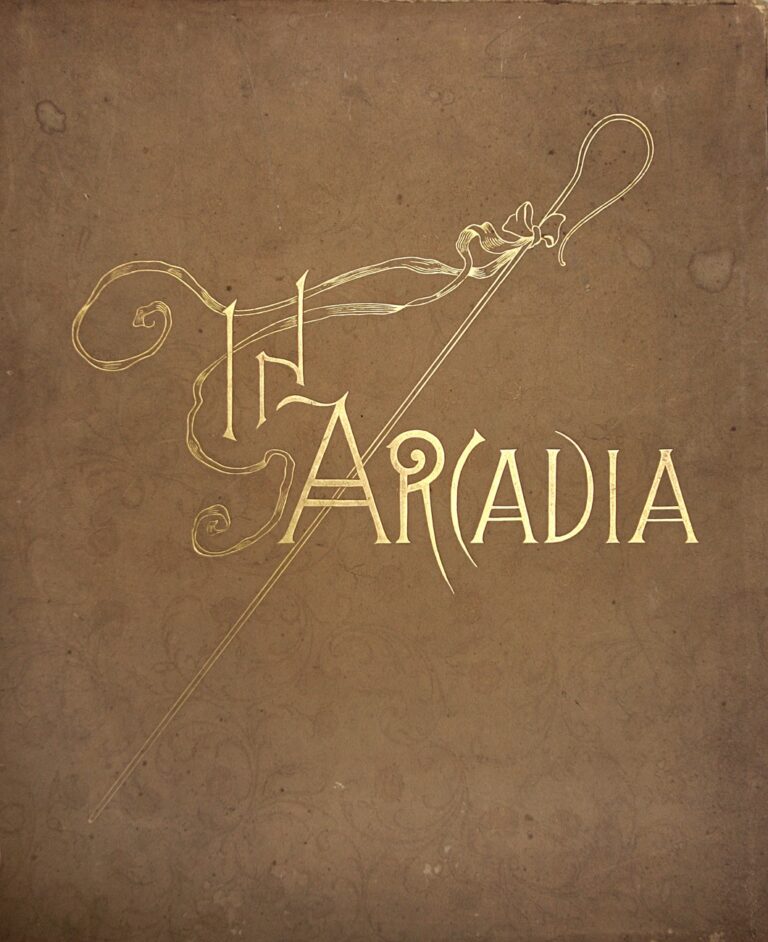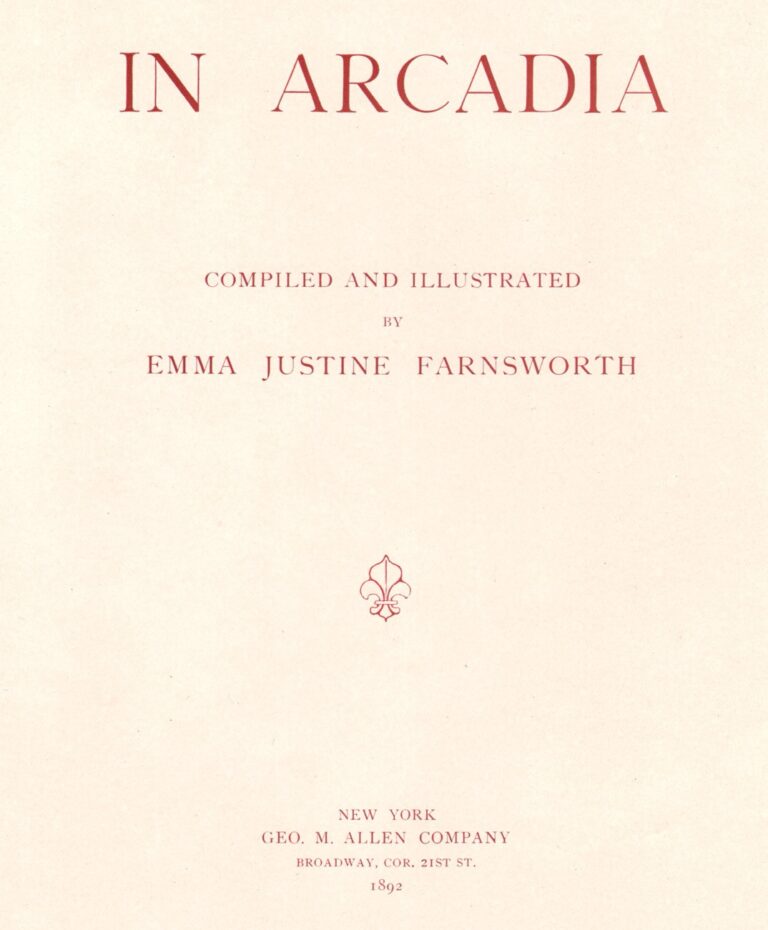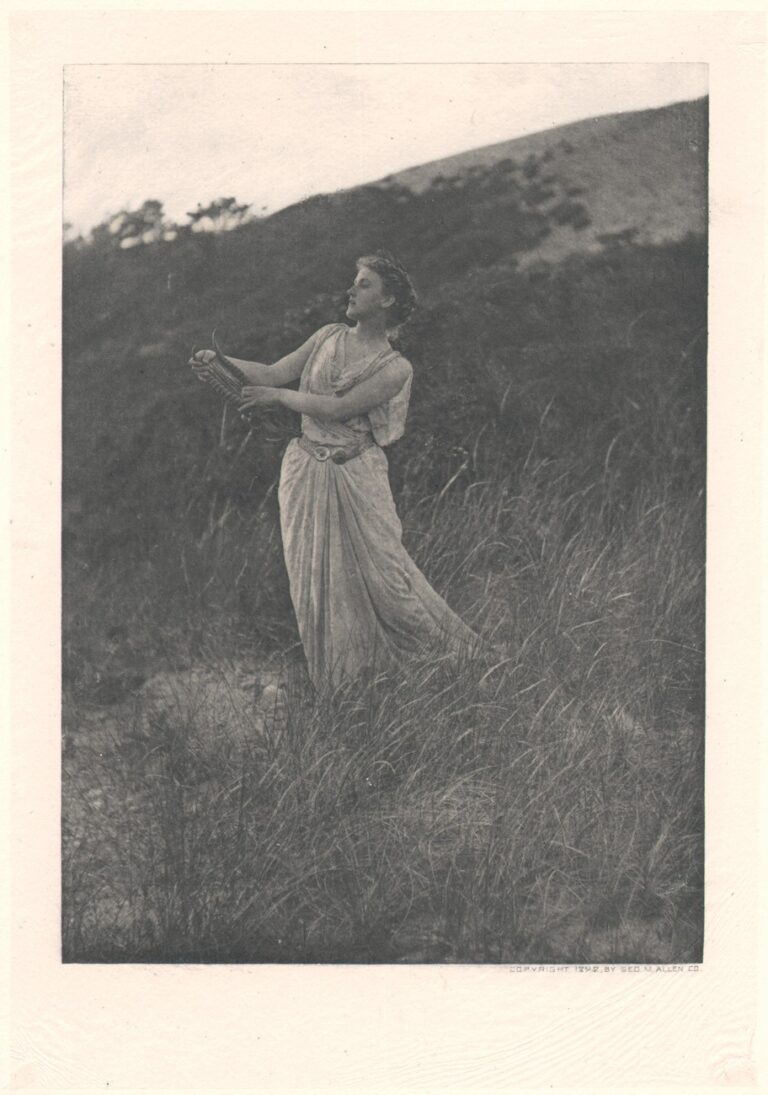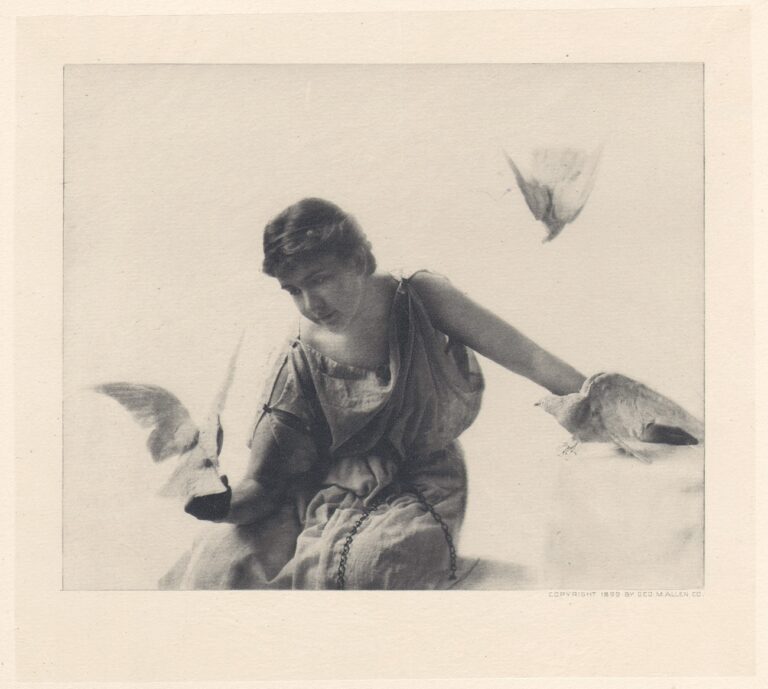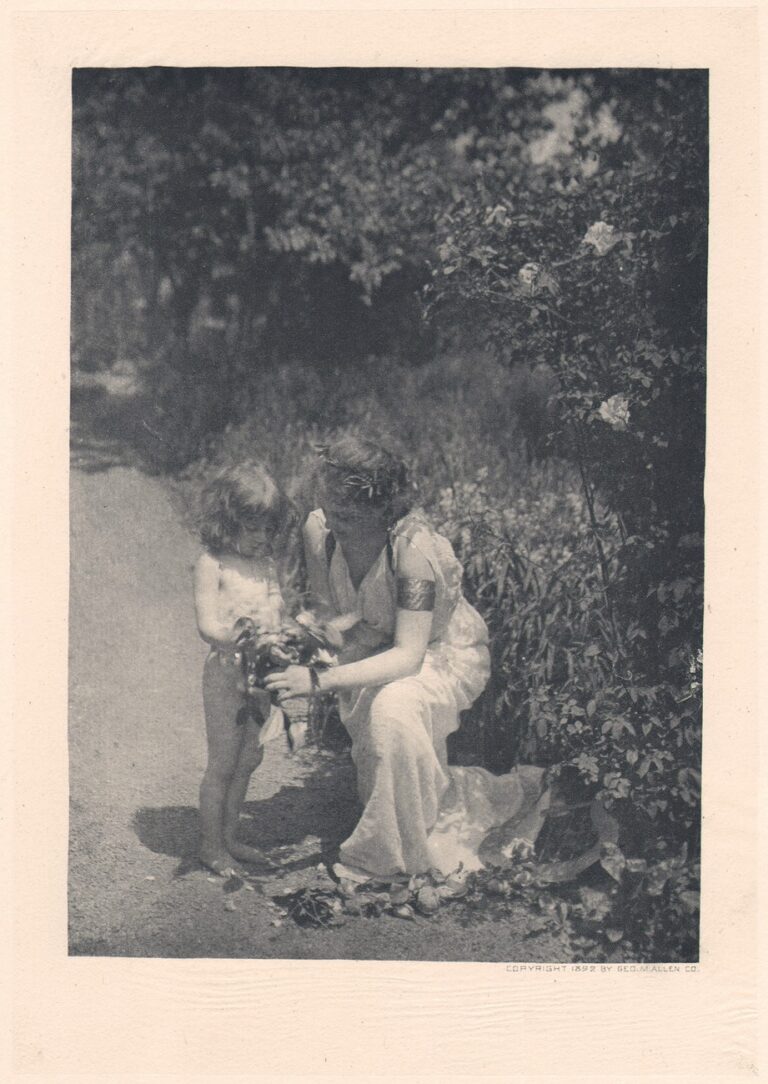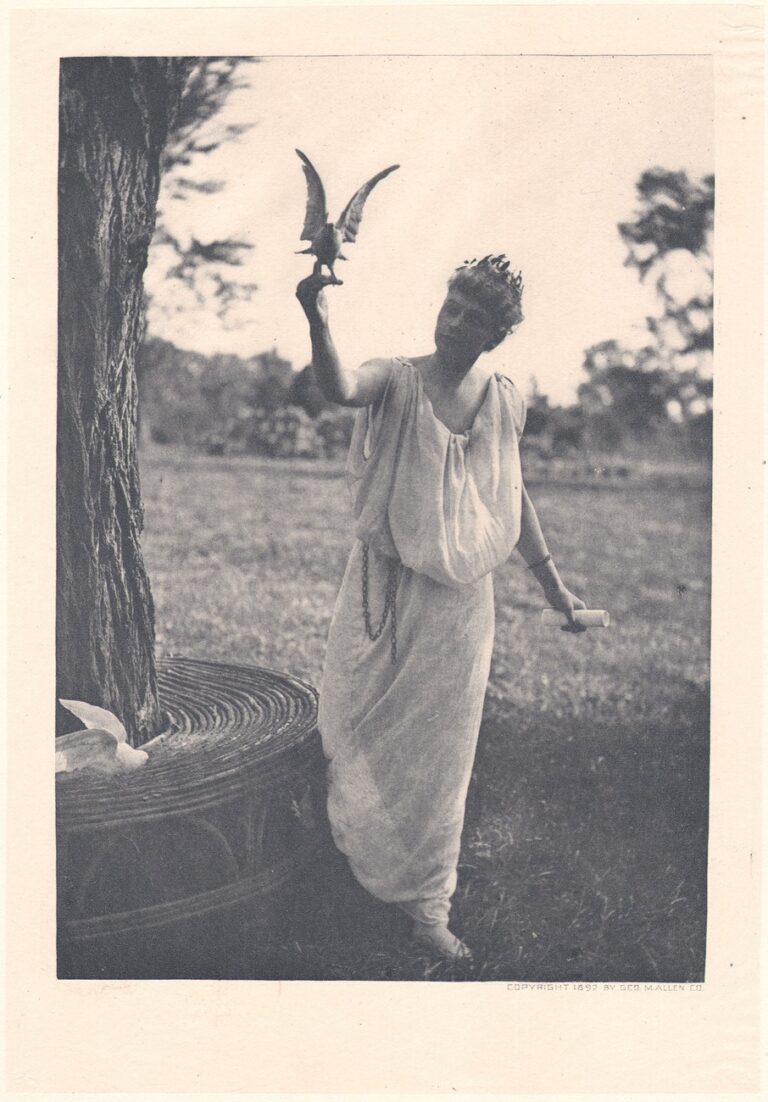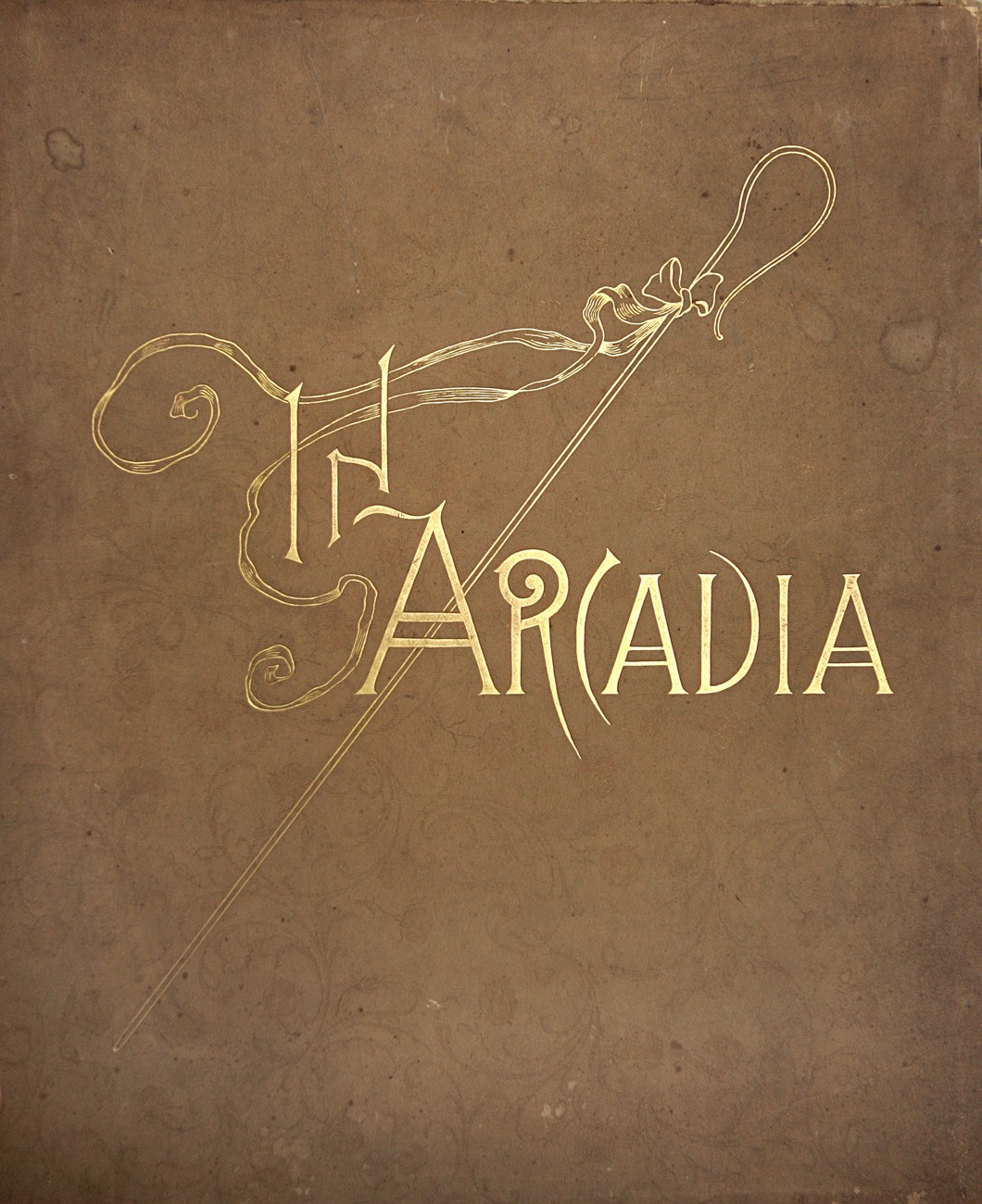
In Arcadia
Virtuous, Utopian, Arcadian. The slim quarto volume In Arcadia portrays these ideals by representing them in the form of a Greek maiden or nymph photographed by American amateur photographer Emma Justine Farnsworth. (1860-1952) Accompanied by poetry-the title page declares: Compiled and Illustrated By Emma Justine Farnsworth– the six delicate Japanese tissue photogravure plates are some of the earliest published examples of her work.
In Greek mythology, {Arcadia} was the home of the god Pan. In European Renaissance arts, Arcadia was celebrated as an unspoiled, harmonious wilderness. (1.)
Three odes penned by the Greek poet Anacreon which have been translated, as well as separate poems by Austin Dobson, Thomas Moore, and Dante Gabriel Rossetti accompany the plates.
In early December of 1892, the following description of In Arcadia appeared in The New York Times as part of a review on Christmas books:
The George M. Allen Company publish “In Arcadia,” compiled and illustrated by Emma Justine Farnsworth. The text, printed in red on quarto leaves of bristol, consists of Austin Dobson’s poem, “To a Greek Girl,” Moore’s “How Dear to Me the Hour,” Rossetti’s “The Monochord,” and three odes of Anacreon. The illustrations, printed in black and white on onion-skin paper, are figures of women in Greek costumes, conventionally graceful in pose and set in photographic landscapes. The title of the book and a mountain staff with ribbon are inlaid in gilt on the covers of light-pink boards studded with roses. (2.)
All six gravure plates and poems in their entirety from In Arcadia are included in this online presentation.
1. excerpt: Arcadia: from: Wikipedia: accessed January, 2013
2. excerpt: review: The New York Times: Some Christmas Books- Gifts for Children and reprints of Classics: December 4, 1892
